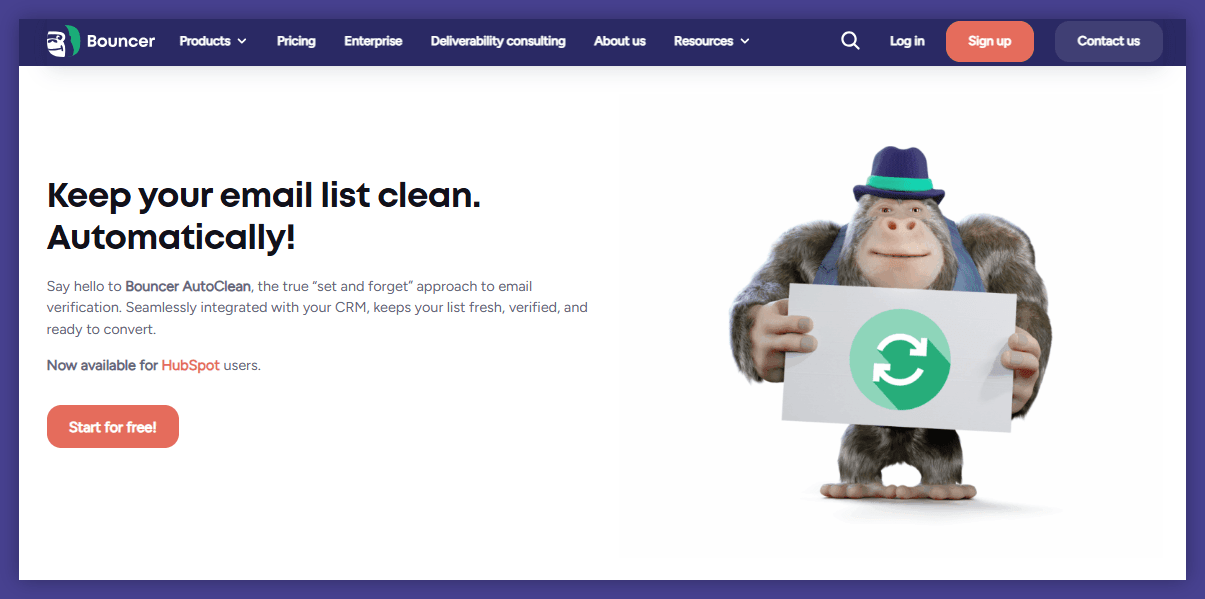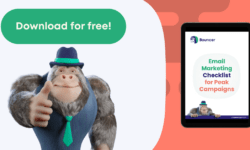It holds the keys to your funnel—and you rely on it to make decisions that drive real revenue. But there’s a silent problem lurking behind the dashboards, pipelines, and reports.
Your CRM might be full of garbage data.
And no, we’re not talking about incomplete job titles or forgotten phone numbers. We’re talking about bad emails—dead inboxes, fake sign-ups, typos, bots, disposables, and addresses that never should’ve made it into your system in the first place. The kind of data that seems harmless until your bounce rate spikes, your sender reputation crumbles, or a major campaign flops for no visible reason.
This isn’t a technical issue. It’s a business problem. And most teams aren’t dealing with it.
Why bad data flies under the radar
Let’s be honest: “email list hygiene” doesn’t sound urgent. It’s rarely on the Q1 strategy deck. It doesn’t feel as pressing as improving segmentation, optimizing subject lines, or rolling out new automation flows.
But here’s the trap: hygiene problems don’t announce themselves.
They’re invisible at first. A campaign underperforms, and the team blames timing. A drip sequence goes quiet, and someone tweaks the copy. An ad form brings in tons of leads, but the conversion rate never improves.
All the while, your CRM fills up with addresses that are slowly eroding performance from the inside.
Over time, that decay becomes expensive. It throws off your metrics. It makes automation unreliable. It leads you to invest in channels or segments that are fundamentally broken. And the worst part? You usually only notice once something’s gone seriously wrong.
Where the bad emails come from
Most teams don’t intentionally feed garbage into their CRM. But it gets in anyway. And fast.
A new lead submits a form with a fake email to get your ebook. A typo slips through when someone fills in a field on a tablet at a trade show. An outdated list gets uploaded from a sales manager’s desktop. Someone uses a disposable address to claim a free trial. A legitimate customer changes jobs, and their inbox disappears without notice.
Add to that: the average B2B email database decays by about 22% per year. That’s not a glitch. That’s just how people behave. People change jobs, switch tools, and abandon inboxes all the time.
And yet, many companies treat email verification like a one-time task—something you do once a quarter when you “get around to it.” By then, the damage is already done.

Manual cleaning isn’t working anymore
In theory, cleaning your list manually makes sense. Export your contacts, run them through a verification tool, delete the bad ones, and move on.
But anyone who’s actually done this knows how painful it is.
Exporting fields. Matching formats. Mapping verification results back into your CRM. Coordinating with teams to avoid overwriting important data. And then doing it all over again a few weeks later, because more leads have come in and you’re back where you started.
In practice, manual cleaning doesn’t scale. Not with CRMs pulling in data from forms, ads, integrations, and sales reps around the clock. Not when every hour brings new records—and new risks. And definitely not when your team is already stretched thin running campaigns, launching sequences, and putting out fires.
If your CRM is pulling in fresh contacts every day, your hygiene process needs to keep pace. Otherwise, your “clean” list becomes outdated within hours.
The cost of doing nothing
Ignoring this issue doesn’t just lead to messy records. It creates downstream problems that affect almost every part of your marketing and sales engine.
Poor deliverability. Fewer replies. Higher bounce rates. False negatives in A/B tests. Wasted ad spend on contacts that will never convert. Broken trust in your data.
And once your sender reputation takes a hit, fixing it isn’t easy. Email providers don’t forget fast. You’ll find yourself throttled, blocked, or silently sent to spam—even when your content is solid and your timing is perfect.
By the time you realize your deliverability is suffering, it’s already too late to fix it with a single scrub. You need a system. One that doesn’t rely on memory, mood, or manual work.
Solving hygiene with automation, not good intentions
Every marketer knows the pain of cleaning up data. Everyone intends to do it more often. But good intentions don’t scale.
That’s why tools like Bouncer AutoClean were built—not to give you another task to remember, but to take the task away entirely.
AutoClean is a hands-off, CRM-connected verification layer that quietly checks your email list behind the scenes. You connect it once—currently available for HubSpot—and from that moment, your CRM starts cleaning itself.
It works in the background. New contacts are verified on entry. Existing ones are reverified on a schedule. Undeliverables and toxic domains are flagged, suppressed, or quarantined according to rules you set. You can even use the results to trigger custom workflows—like removing risky leads from your nurture campaigns or alerting your sales team before they waste time on a dead contact.
The best part? You don’t have to log in, remember to run a job, or move any data. It just runs.

Think of it as switching from doing your own taxes every quarter to having a real accountant on retainer—one who updates everything quietly, accurately, and without nagging you for CSVs.
Don’t wait until your campaigns fail
It’s easy to keep pushing hygiene to the bottom of the list. Until your bounce rate hits the red zone. Until your CRM starts glitching from overloaded contact logic. Until a key campaign fails and nobody can explain why.
But you don’t have to wait for a failure to make a change.
Your CRM is already automated. Your workflows are already smart. So it only makes sense for your list hygiene to match. Especially when the fix doesn’t require a huge overhaul, a new platform, or hours of configuration.
It just takes a one-time setup and a shift in mindset—from reactive to automatic.
If your contact list is the fuel for your funnel, then bad data is the sludge in the tank. And the longer it sits, the more damage it causes.
You’ve already invested in the content, the copy, the ads, and the flows. Let’s make sure your emails actually land where they’re supposed to.
Explore Bouncer AutoClean and start protecting your sender reputation—quietly, continuously, and without ever exporting a CSV again.
And try free email verification with Bouncer.


